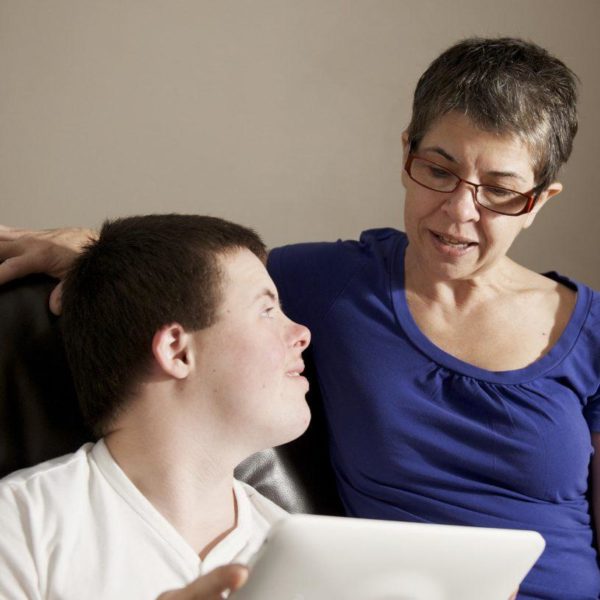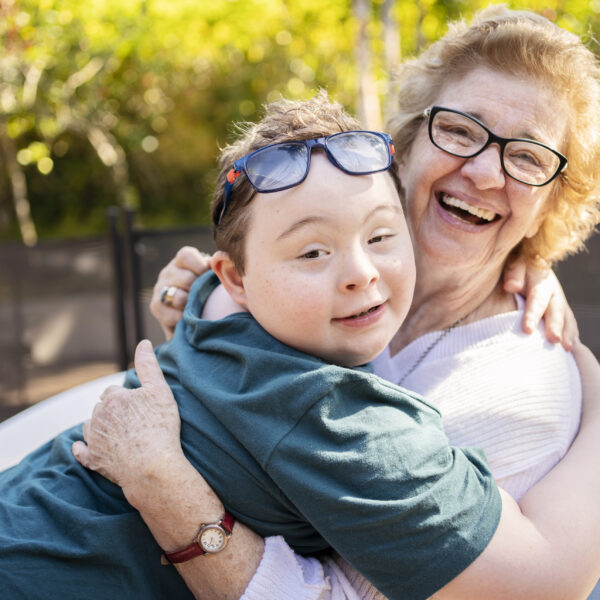Disability Living Allowance
What is DLA?
Disability Living Allowance or DLA is a benefit for children under 16 with a disability or health condition. DLA helps to meet the extra costs families face as a result of their child’s disability.
DLA is also a passport to other sorts of financial help.
Disability Living Allowance is paid monthly, and it isn’t taxed or means tested, which means they don’t take your other income into account. You can claim DLA if your child needs more help or looking after than other children their age because of their additional needs. Your child can claim DLA until they are 16. After that, they will need to claim the equivalent benefit for adults, Personal Independence Payment (PIP).
Who can claim DLA?
Many parents are put off claiming Disability Living Allowance because they don’t think of their child as disabled. In fact, the majority of children who get DLA have ‘invisible impairments’. So, if you’d describe your child as having additional needs and are not claiming DLA, you might be missing out on financial support that your child is entitled to.
It’s not just children with obvious physical disabilities who need ‘extra help’. Many of our children need help to make themselves understood, make sense of what’s going on around them, or to manage difficult feelings like anger or anxiety. Some children need ‘hands on’ help, or prompting and encouragement with everyday activities like dressing, washing, and toileting or maybe to learn how to play or get along with other children. Your child may need you to monitor a medical condition, give medication, help to use special equipment, or to carry out a therapy programme. Or perhaps your child needs your help to get out and about or needs you to keep an eye on them to keep safe. All these count as extra help.
Some children need much more help than others of the same age. But even if your child needs extra help with just some of the things we have mentioned, we think it’s worth making a claim for DLA. If your claim is successful DLA is payable in two parts. There are care and mobility components: you can claim either or both and there are rules about what you can claim.
Special rules for life limiting illness
If your child is diagnosed with a life limiting illness and is unlikely to live more than six months, they can claim DLA under Special Rules. Your child will automatically be awarded the high rate of the care component and doesn’t need to meet retrospective or prospective tests.
Though claiming benefits is likely to be the last thing on your mind if you’ve just been told your son or daughter has such a poor prognosis, it is a good idea to try to claim it on their behalf as soon as you feel able: DLA can’t be backdated to before the day you claim it – even in such distressing circumstances.
Your child’s consultant will need to complete an SR1 form. The DWP aims to make decisions about these claims within eight days of receiving the form.
The care component
You can claim this if your child needs help with ‘personal care’, that is, looking after themselves and this includes things like keeping safe and communication. You can claim this part of the benefit at any time, as long as your child has needed the extra help for at least three months and will continue to need that help for at least another six months. There are special rules if your child is terminally ill. There are three rates at which it can be paid:
The lower rate: if your child needs some help during the day or night. This is currently £29.20 per week.
The middle rate: if your child needs frequent help or constant supervision (more so than for other children their age) during the day, supervision at night, or someone to help while they’re on dialysis. This is currently £73.90 per week.
The high rate: if your child needs help day and night, or is terminally ill. This is currently £110.40 per week.
Rates change in April every year. These rates are correct at April 2025. Get the latest rate here: Disability Living Allowance (DLA) for children: DLA rates for children – GOV.UK (www.gov.uk)
The mobility component
You can claim this part of the benefit if they need extra help with getting around. There are two rates for this:
The lower rate payable from five years
You can claim this if your child needs someone around to keep them safe or someone to help them find their way around. Many primary age children are still learning how to get about and stay safe on streets and in parks near their homes. So, to get this you will need to show how much more help your child needs than others of the same age. Most children meeting the criteria for the lower rate mobility component are likely to have a significant learning or co-ordination difficulty, a communication disorder or some sensory impairment.
The lower rate of the mobility component is currently £29.20 per week.
The higher rate payable from 3 years
You can claim this if your child’s ability to get around is severely restricted by their disability. It is payable to children who are unable to walk or are deemed virtually unable to walk. Many children with Down syndrome, for example, are considered virtually unable to walk because they don’t have the stamina or coordination to walk any distance outdoors at three, though this may change later. Other children meeting this rule are likely to have a severe physical or sensory impairment, a life threatening neurological, cardiac or respiratory disorder.
The higher rate of the mobility component is currently £77.05 per week.
These rates are correct at April 2025. To see the latest rates visit Disability Living Allowance (DLA) for children: DLA rates for children – GOV.UK (www.gov.uk)
Claiming the higher rate mobility component under severe mental impairment (SMI) rules from 3 years
The higher rate is also payable to a very small number of children on the grounds of severe mental impairment. These are children who have behaviour that challenges those around them, are already in receipt of the high rate of the care component, and likely to have a diagnosis of severe learning disability and social and communication disorder. You will need to show that your child’s behaviour is so unpredictable, disruptive and extreme that they regularly require someone to physically intervene to prevent self-injury, injury to others or damage to property.
Your child must meet every one of these criteria. It’s never straightforward to claim the higher rate on these grounds because the DWP struggles to understand how to apply this rule appropriately, and the DLA claim pack does not encourage you to give the relevant information.
If you think your child meets these rules, you can explain these needs on the part that asks for extra information about your child’s physical ability to walk. You should be clear that you are claiming under SMI (severe mental impairment) rules. We suggest you type additional notes and add them to the claim pack.
If your child is five, and you want to claim under SMI rules, you should make it absolutely clear that your child is so learning disabled that they are not able to take advantage of guidance and supervision. Be sure to include examples of extreme behaviour that has put you and your child at risk. Include as much supporting evidence as you can, for example school risk assessments, behaviour support plans and of course your child’s EHC plan.
You can get lots of other tips about making a strong DLA claim in our Tips for claiming DLA fact sheet (pdf 700kb)
If your child is coming up to three years old and already receives the care component of DLA at the higher rate, you should be contacted and asked if you wish to make a claim for the mobility component.
If you do get the higher rate for mobility for your child, you may be entitled to additional help with transport and parking. Find out more about getting help with transport and parking.
How to make a DLA claim
Start by getting a claim pack soon as possible: DLA cannot be backdated beyond the date you first asked for this.
It’s best to get the form by phoning the DWP (on 0800 121 4600 or text phone on 0800 121 4523). You may have to wait a long time for them to answer but it is a freephone number. DWP will stamp your claim pack with two dates: the first is the date you phoned to ask for it and the other is six weeks later. As long as you send the form back within six weeks, if it’s successful, the claim can start from the first date.
You can also
- Download a claim pack by visiting the gov.uk website
- Complete the form online but we wouldn’t recommend you do this, simply because most text boxes on the online form will only allow you around 300 characters, and this isn’t enough to explain most children’s needs. The online form also only allows you to tick yes OR no whereas you can tick both on the paper form where your child’s needs are more complex.
Gathering evidence
The DWP will also want evidence from other people who know your child. So be prepared. First, check that all professionals whose details you include know you are claiming, but don’t expect the DWP to contact them. Send in copies of the most recent reports or assessments from any specialists your child sees. You can never have too much evidence. GPs can find themselves ‘out of the loop’ as your child is referred onto specialist consultants, so it may be worth making an appointment with your doctor to put them in the picture. The DWP will usually contact your child’s school, especially if you haven’t included evidence with your claim about the extra help that your child gets.
You can book onto a free Amaze workshop to help with your DLA or PIP claim.
See our Events page for a full list of all our workshops.
Challenging the DWP's decision
If your child’s claim for DLA is turned down, or you don’t get the result you expected, don’t give up. You can challenge a non-award or the length of an award. You can also argue that you feel your child should be entitled to a higher rate of either the care or mobility component but be sure to check the criteria first.
The DWP can look at any part of the award again, even a part you are happy with, so it’s important to seek advice before asking for a decision to be looked at again, just to make the best of this opportunity.
Over 50% of decisions are overturned when you ask another decision maker to look at the claim again and nearly 80% of appeals are successful.
You can also ask for a review if your child is receiving the benefit at a lower rate and their condition alters and they need more help, or if the decision was correct at the time but circumstances have changed.
It’s important to act quickly – you only have 28 days from the date on the decision notice to challenge a decision. When you ask another decision maker to look again at the claim, this is called requesting a mandatory reconsideration. The DWP must do this, if you ask. You must go through this process before you can appeal.
Asking for a mandatory reconsideration
The first thing to do is contact the DWP and ask for a Written Statement of Reasons. This will give you an extra two weeks to tell DWP what you disagree with. If you did not keep a copy of the claim, ask for a copy of everything you’ve submitted so far, as well as any extra reports requested by DWP.
A Written Statement of Reasons should set out in more detail how the DWP arrived at their decision. Having a more detailed written response can make sense of how the DWP came to their first decision.
Making a strong case
Responding to each point in the DWP’s Statement of Reasons, however bizarre, can be a useful way to structure your reply.
Say what it is that you do not agree with and why. It may be that you feel your child should be entitled to the higher rate of the care component rather than the middle rate. Or maybe you disagree with the length of the award.
Go through all the paperwork carefully and think about what would make your claim stronger. Has any evidence been overlooked? Do you need extra reports to support what you say? If you haven’t kept a sleep diary and you’re trying to secure the higher rate of the care component, now’s the time to do it. Write giving detailed reasons why you disagree with the decision and stick to timescales.
You can lodge your mandatory reconsideration request over the phone, but we think it’s worth putting your reasons in writing too. That way you can be sure that there is a written record of all the points you want to make.
The DWP has 13 weeks to look at the claim again. Your right to appeal a DLA decision only arises once a different decision maker has reviewed all the information and you have the outcome in writing. Hopefully, the first decision will be revised in your child’s favour and you won’t need to go to appeal. If it isn’t, all is not lost!
Whether or not the decision is changed, you will get a mandatory reconsideration notice. You will need this to appeal. You now have one calendar month to submit your appeal.
Download our DLA Reconsiderations and appeals fact sheet (pdf 680kb) for more information:
DLA appeals
Appeals are made directly to an independent Tribunal. You will need to fill in an SSCS1 notice of appeal. You can download this from www.gov.uk website or by ringing the DWP on 0800 121 4600 to get one posted out. Say clearly what part of the decision you disagree with and why. Keep a copy. Send it back within the timescale.
Amaze can offer parents advice to help prepare for DLA appeals. Visit our Benefits advice service page
It’s best to opt for a face to face hearing, as your chances of an outcome in your child’s favour are much greater if you do. You do not need to take someone like a solicitor with you. Experience of DLA appeal tribunals tells us parents and carers are generally best placed to ‘tell it how it is’.
If you don’t want to attend in person, you can submit an appeal in writing or send a representative to act on your child’s behalf. But if you have a campaigning spirit and find it easy to speak from the heart, it’s worth doing it yourself.
If you have any more supporting evidence, send it in at least a week before the hearing. If you only get a report the day before, take it with you and explain about this. In our experience the Tribunal panel will accept evidence on the day.
Remember, the Tribunal will want to know how things were at the time you put in the claim. Appeals can take a year to be heard, so make time to read through your ‘bundle’ of papers several times. What’s important is how things were at the time you made the claim so it’s worth refreshing your memory.
There are time limits for reviews and appeals so always get advice as quickly as possible. In some cases, the Money Advice and Community Support Service, or the Citizen’s Advice may be able to help you with an appeal, but you may need to meet certain criteria. Another option for East Sussex parent carers is Hastings Advice and Representation Centre.
Download our fact sheet on DLA Reconsiderations and appeals for more information.
Get help with DLA from Amaze
Parent carers and young people in Brighton & Hove and East Sussex can get help with claiming Disability Living Allowance (DLA) and Personal Independence Payment (PIP) from Amaze. We offer:
- online advice, fact sheets and targeted resources to help you make a claim
- regular Zoom workshops on claiming DLA or PIP
- targeted support to families facing extra challenges via our DLA and PIP Advice Service

Other sources of help
Local organisations such as HARC, St Luke’s and Citizen’s Advice may be able to offer you help with your claim. Or you can visit your Local Offer to search for other organisations that give financial advice.
If you are getting help from a general advice agency, we suggest you go well prepared. It’s worth making some notes before your appointment, taking photocopies of any reports and assessments you have, and especially your child’s EHC plan if they have one. You could also take any useful resources that you have from us.
Some national disability organisations, such as Contact, offer useful advice about claiming DLA for children and young people. Contact also produce DLA advice videos in English, Polish, Arabic and Somali Introduction to DLA videos (contact.org.uk)















